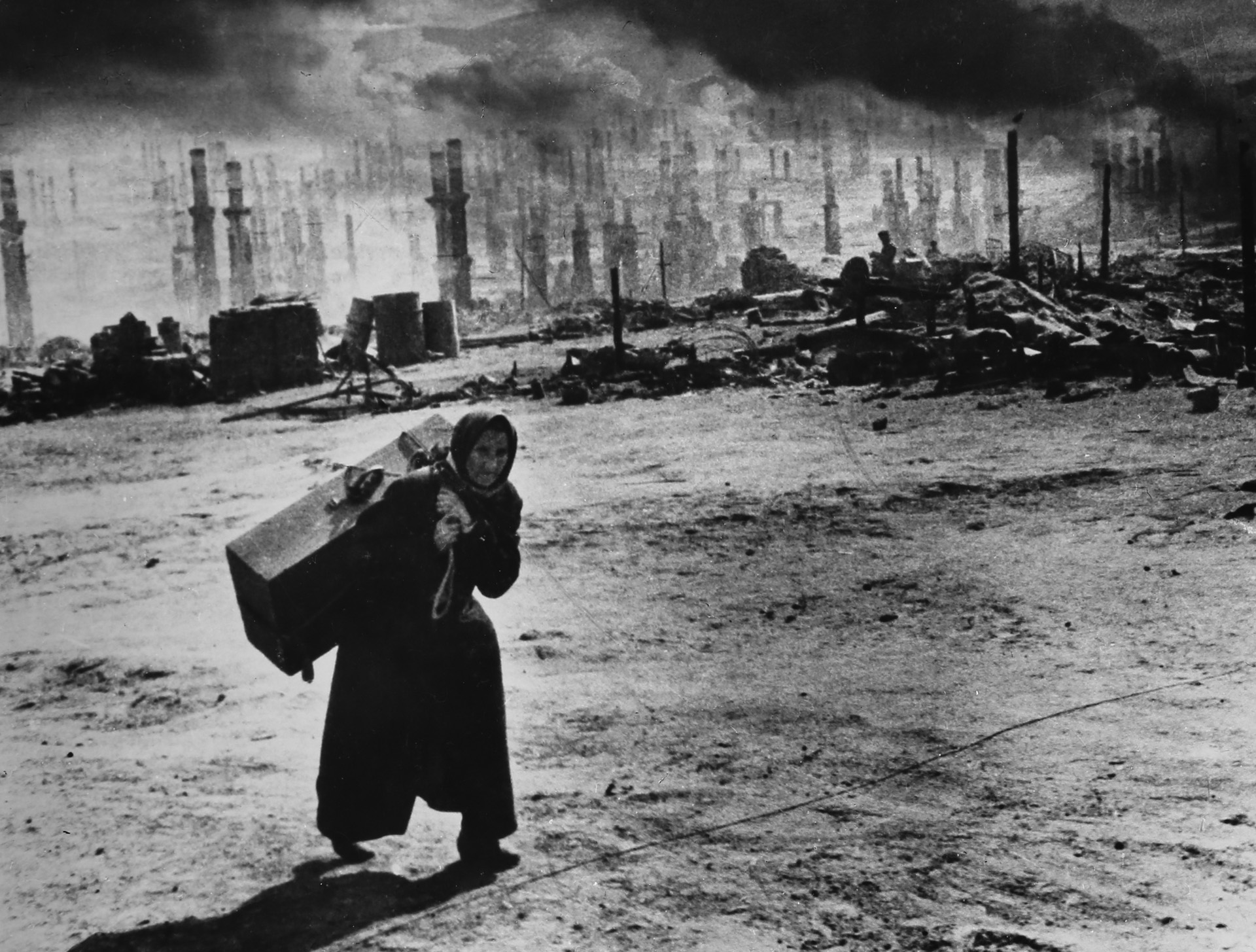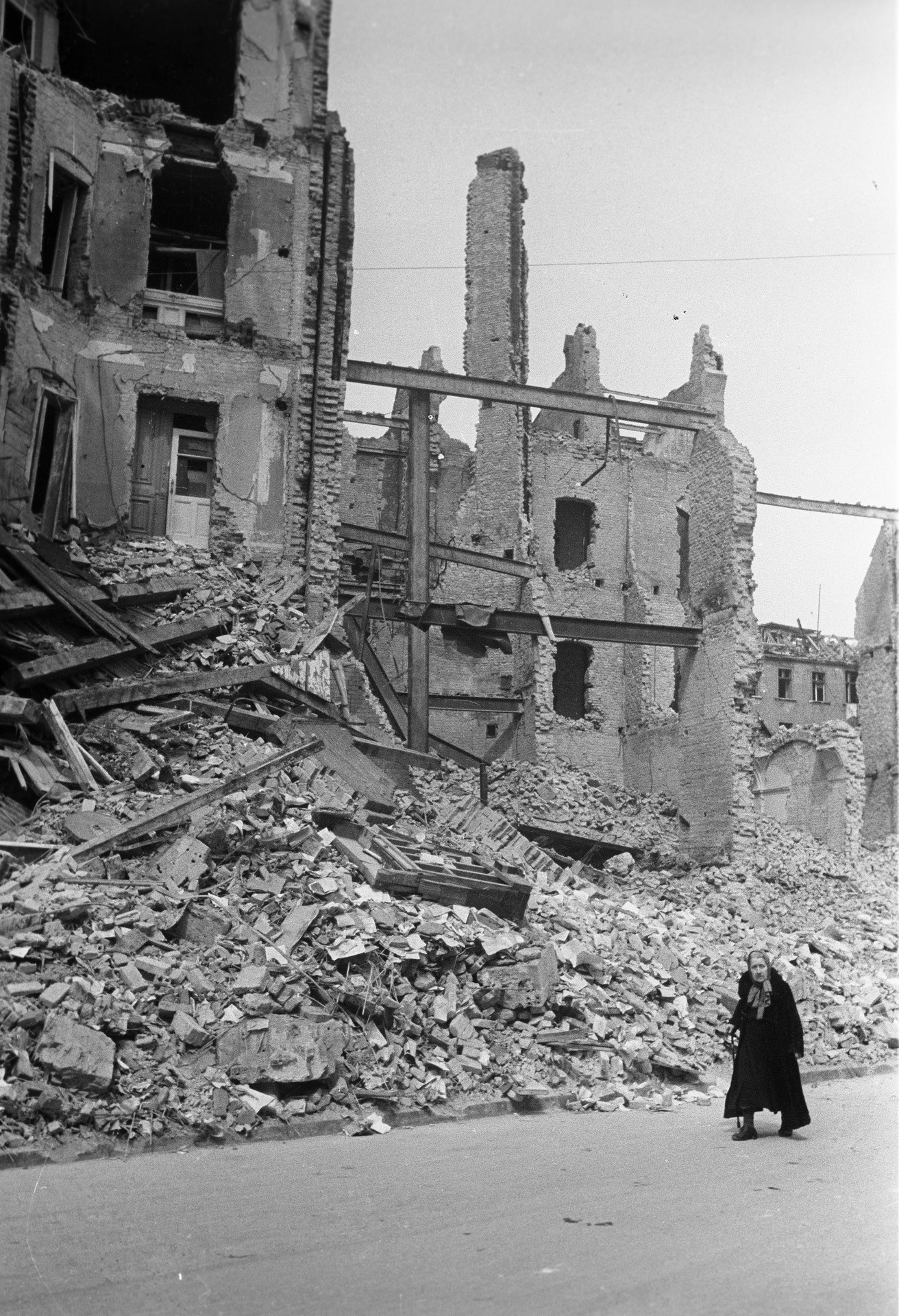Murmansk
1942
During the Great Patriotic War, Murmansk faced relentless Nazi attacks from both land and air. “There were days when the city would hear as many as 16-18 air raid sirens. Throughout the war, enemy aircraft appeared in Murmansk’s skies 792 times. They dropped 4,100 heavy high-explosive bombs, each weighing up to half a ton, and more than 180,000 incendiary bombs — averaging 4-5 bombs for every resident of Murmansk.”
“June 18, 1942, was a particularly tragic day. Beginning at 11:35am and continuing until late in the evening, 53 Junkers Ju-87 and Ju-88 bombers, covered by 52 fighting jets, bombarded the city in four separate raids. The aeroplanes, flying at altitudes of 5,000-6,000 meters, indiscriminately bombed large areas. Incendiary bomb cassettes were dropped on the city’s wooden quarters. These cassettes opened mid-air, dispersing incendiaries in a fan shape over a vast area. In the Kirov district alone, now the city centre, 25,000 incendiaries fell. Heavy high-explosive bombs also rained down on the burning buildings, scattering ignited debris over hundreds of meters when they exploded.”
Photographer Evgeny Khaldei documented the devastation in Murmansk. One of his most well-known photographs, taken in June 1942 on Karl Liebknecht Street in the historic centre, captures the city in ruins. The Nazis had aimed to burn Murmansk to the ground; the wooden city, upon which thousands of bombs were dropped, burned fiercely. Only chimneys remained standing above the ashes. In the foreground of the photograph is an elderly woman, carrying a wooden suitcase with her remaining belongings — the only things left from her home.
Khaldei photographed her. She set down her suitcase, sat on it, and said reproachfully, “Why are you, sonny, photographing my grief and our tragedy? If only you were photographing our troops bombing Germany…” Khaldei felt a pang of embarrassment for snapping the lady and admitted, “Yes, you’re right, of course. But hopefully, I will have the chance to take such a photograph someday.” (And he did so in Berlin in 1945.)
This photograph, taken by Evgeny Khaldei in 1942, was presented alongside two of his other photographs as evidence of Nazi Germany’s crimes at the post-war Nuremberg Trial.


